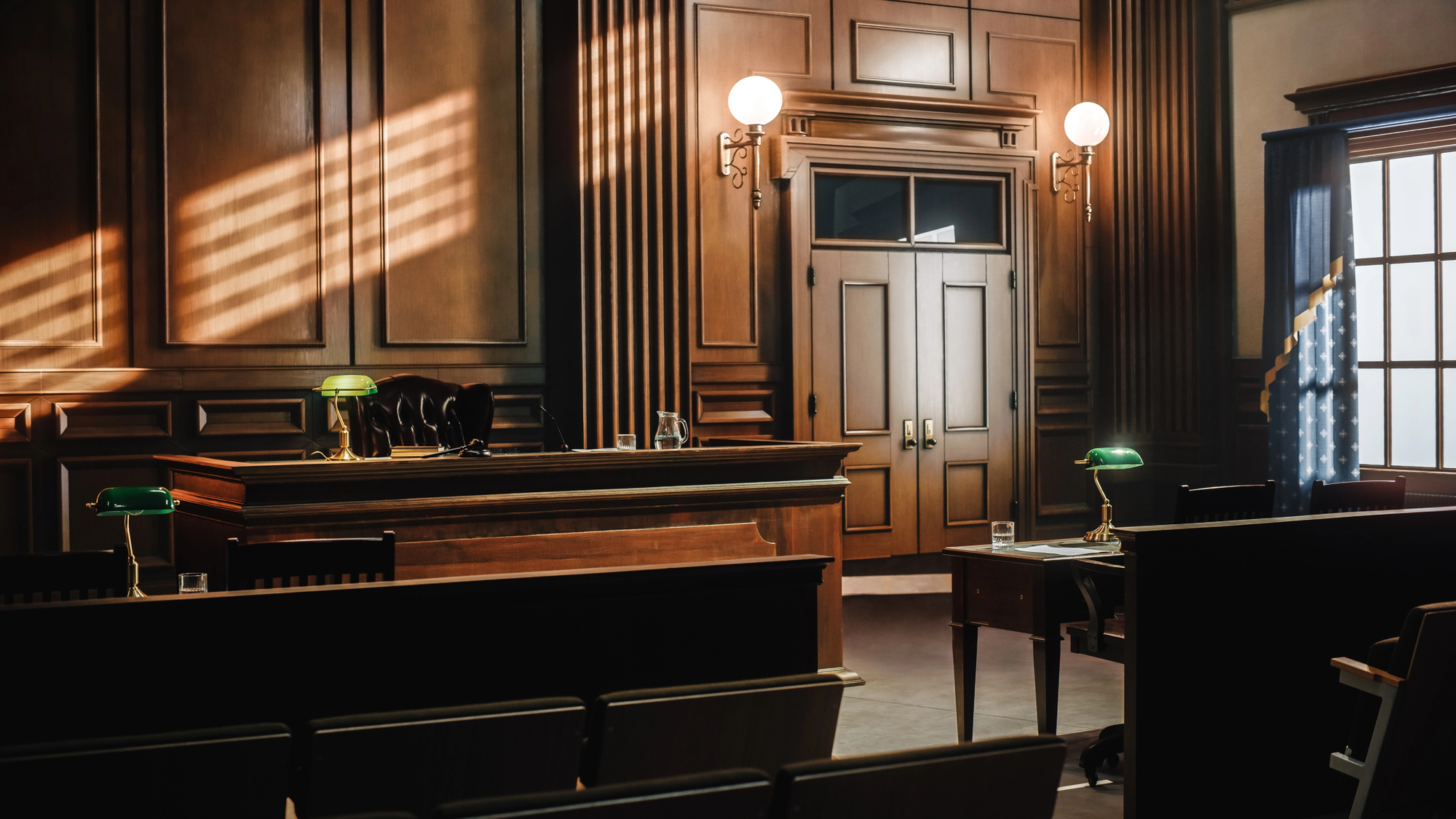The actual people’s participation in justice by adjudication has been promised and awaited its moment for a very long time, and without a doubt it is a meaningful step forward for Ukrainian community. Another matter of concern for legislator should become the ongoing debate on how to secure the impartiality of jury and secure an obligation of lay judges to refrain from independent research on a case in the era of new social media, when it is almost impossible to control the flow of information and individual personal contacts.
Introduction
The concept of jury is a blast from the past in the history of Ukrainian justice. However, for a long time the Constitutional guarantee of a jurors’ participation in trials has been rather theoretical than practical. This form of dispute settlement is commonly characterized as collegial, non-bureaucratic and representative of the community. The main idea behind implementing this concept is not an expectation that jurors (compared to professional judges) will make “better” decision, but that citizens are the ones entitled to rule in a case.
The lack of peoples’ trust to the judicial system is often named among cornerstones of the current Ukrainian crisis. The indisputable class stratification (resulting in unraveling ruling privileged elites and the majority of the state population) turned judges in ostensible “untouchable sect”. A jury in such situation seems to be a perfect icebreaker to open the courts for people and regain their trust.
In 2012 the new Code of the Criminal Procedure has been adopted along with the provisions governing the jury participation in criminal justice. This has been a turning point where the concept has outgrown the “theoretical stage” to be applied in practice. The first reaction to this procedural novel was somewhat ambivalent (and subsequently got even messier: some argued that jury mainly tended to sentence defendants, others insisted that jury predominantly exculpated accused).
The recent controversy regarding jury participation concerns latest hearings in a case against two ex-members of a special police unit Berkut. The Court failed to select jurors to hear the case since it has been revealed that some of them were simultaneously listed as people’s assessors at Sviatoshynsky Court. Procedures in this case are already overly long and the jury issue temporizes the case even more. On July 7th the Court has finally selected jurors and rescheduled hearing in the case on July 15th,. It took Court nearly a year to finally set a date for a hearing on the merits. This means that two suspects spent over a year in detention facilities before the Court was able to actually adjudicate, while one of suspects (in his case there was ungrounded change of preventive arrest to home arrest) has been mysteriously “abducted’ in October 2014.
This triggers further critique directed against jury in Ukraine: such practice works imperfectly and costs too much. It is rare but not unprecedented for the government to abolish jury trials after devastating notorious cases, such as K. M. Nanavati vs. State of Maharashtra in India. This post briefly reviews the contemporary Ukrainian jury model and attempts to estimate whether this practice is viable, while focusing on what international state practice has to offer to enhance the efficiency of the model.
Ukrainian legislation
Articles 124 and 127 of the Ukrainian Constitution prescribe that justice should be administered by people’s assessors and jurors in cases determined by law. This provision is also incorporated into the Law on the Judicial System and the Status of Judges (Arts.1,5) where it is emphasized that these bodies represent a form of direct citizen’s participation in administration of justice.
Ukrainian legal system distinguishes two forms of such participation: (1) people’s assessors and (2) jurors. Under Art. 58 of the Law on the Judicial System people’s assessors are awarded with the same procedural guarantees and powers as professional judges during case proceedings, while jurors’ obligations are limited to general ones defined by Art 55(5)(1-5) of this Law. Unlike people’s assessors, jurors’ opinion is not imperative for the bench: the text of the law requires people’s assessors to ‘adjudicate’, while jurors are merely ‘involved’ in hearings. Despite this difference in the scope of authority, both bodies may be labeled as lay judges. There are several restrictions for a citizen to be appointed as a lay judge:
- person must have full legal capacity;
- person must reside in Ukraine and speak Ukrainian;
- person must be 30-65 years old (doubtfully justified restriction);
- person may not hold a position in state service, advocacy, notary office, law enforcement, local administration, military service;
- person must not have any outstanding convictions;
- person can not hold both – juror and people’s assessor – positions.
Commission at local council forms the list of potential people’s assessors, while the list of jurors is drafted by the regional branch of the State Judicial Administration with the assistance of the local council. These lists are forwarded to the Court, where the personal composition of the bench in proceedings with lay judges participation should be defined by the Court’s automatic system of document circulation at random.
Lay judges may participate in both criminal and civil separate proceedings.
Under Art. 234(4) of the Code of Civil Procedure, the court composed of one judge and two people’s assessors may hear cases on establishment of legal facts, namely:
- restriction or renewal of active civil capacity of a person;
- declaration of a person to be missing or dead in absentia;
- adoption;
- providing involuntary mental health care;
- compulsory admission to antituberculous institutions.
The Code of Criminal Procedure has a separate section governing the conduct of procedure when jurors participate in a trial (Chapter 30, Section 2). Jurors’ participation is endorsed in a court of the first instance upon the motion of the defendant. Pursuant to Art. 31 (3) of the Code, criminal proceedings in life imprisonment cases should be conducted by a panel of two professional judges and three jurors. Art 31 (9) defines the second type of cases when jurors are involved in hearings, namely criminal proceedings concerning the senior state officials and proceedings in cases investigated by National Anticorruption Bureau if offenses are punishable by life imprisonment. In such cases the panel should consist of two professional judges with 5 years experience and three jurors.
Relevant state practice
Ukraine decided to depart from the traditional Anglo-American model of jury in favor of European version of a “mixed court”: lay and professional judges deliberate on a case collectively. Although, there is a debate on which of those models is more constructive, there is a consensus that both models serve the purposes of jury.
The composition of Ukrainian bench in cases with jurors (2 professional judges and 3 lay judges) and people’s assessors (1 professional and 2 lay judges) resembles in part German model: Schwurgericht trial sitting for particular serious offenses (2 lay and 3 professional judges) and Schoffengericht trial for less serious crimes (2 lay and 1 professional). As opposed to Ukrainian system, however, contemporary Germany is a well-established democracy and is not compelled to overcome the credibility gap. Moreover, German jury model has survived several reforms and until 1975 the Germans used a panel of 6 lay and 3 professional judges for serious offenses. Decision to decrease the number of lay judges in a panel resulted from changes in the rules for selecting lay judges since rarely used forms of mixed trials have been eliminated. Thus, this model was a result of the empirical German experience and a long historical debate.
Considering the complicated current Ukrainian context, the implemented model of mixed court significantly diminishes authority of lay judges and nullifies the purpose of jury as such. Since there are few lay judges and they do not act independently from professional judges, the influence and persistence of professionals may rather intimidate then persuade people who have minor or none experience in trial proceedings. Hence, such relationship among bench members may hardly contribute to restoration of trust in judicial branch. Additionally, small groups of lay judges are less likely to overcome widespread social prejudices/biases, or to adhere the minority opinion (often underrepresented in small groups). The larger groups of lay judges also make it harder to bribe/intimidate its members and to control the leak of information about bribery/intimidation attempts.
There is no consistent state practice on the optimal jury composition: number of the members of the panel varies from 15 in Scotland to 12 in England, Belgium, Australia to 7 or 9 in Hong Kong and 6 in some cases in the USA. The research carried out by University of Glasgow concluded that 12 persons sitting in jury decrease the effectiveness of the trial and seven should be a preferred number. It is understandable that Ukraine can hardly afford panels composed of 12 members, but it would be advantageous to increase the number of lay judges in a panel.
The other widespread critique of the jury system addresses the complexity of legal matters and doubts the ability of lay judges to fully assess the case without special expertise or training (which sometimes even professional judges lack). However, this critique does not stand because the complexity of a matter or a legal text does not in itself justify exclusion of citizens from adjudication. If a citizen may not understand the meaning of the law and apply this law to the particular life circumstances it means that either lawyers and judges failed their part in making logic of arguments clear or that the legislation in question is deficient as such. Moreover, the practice of explaining legislation in clear and understandable manner is an excellent exercise in civil society “team-building”.
Another important matter, which must be addressed by legislators, is further development of a detailed procedure for selection of lay judges. There are two major problems in this domain: a jury pool as such and a waiver procedure.
The jury pool is currently very small, while the selection of jurors is not transparent for the public. The lack of concrete rules on applying for the duty (public announcement of application procedure, fixed timeframe) results into the impromptu process. It was not coincidental that in the case initiated against two ex-members of Berkut, the vast majority of volunteers for juror positions were former members of the Ministry of Interior Affairs (local police officers, investigators, etc) and even a family member of the judge working in the Court. Defendant’s lawyers in cooperation with legal representatives of applicants have revealed the blatant violation of the juror application procedure. Instead of public announcement about jurors selection, the Kyiv City Council have contacted a number of particular persons either personally or through Court’s secretaries. Hence, every questioned juror candidate has filed an application for juror’s position 2/3 weeks before the Court requested to announce the start of application procedure. Applicant’s representatives have filed a complaint about this procedural breach.
The second problem is derivative from the first one. Although the Code of Criminal Procedure attempts to insert provisions addressing the potential conflict of interest or bias of a selected juror, the obligation to reveal such bias rests entirely on a citizen. The judge may or may not ask him/her about possible split incentive. However, the person selected as a potential lay judge may not be fully aware of all circumstances of a case and may not always claim the waiver in advance (or may be simply reluctant to do so as in the case involving ex-Berkut members). If a person reveals the bias after the start of procedures and waives the participation, the case must be “put on hold” to substitute the judge who delays the final decision. Therefore, it is reasonable to shift this burden on staff of the court in a form of a mandatory background check or voir dire procedure prescribed by law. Similar concerns have already been raised in Ukrainian academic community and are discussed in detail here.
Conclusion
It is extremely unjust to blame the low efficiency of the Ukrainian model of mixed courts on the entire concept of jury. The actual people’s participation in justice by adjudication has been promised and awaited its moment for a very long time, and without a doubt it is a meaningful step forward for Ukrainian community. However, the adopted mode of jury system in Ukraine has yet to be improved. One of such enhancements may become an increase in the number of lay judges constituting a panel. However, it is also understandable that this would make the process excessively costly, especially during the major economic crisis. To make this adjustment feasible and effective it might make sense to e.g. currently limit participation of the lay judges to a certain category of cases where their participation is not merely desirable but also necessary. This category may be, for example, cases concerning the legality of the use of force by the law enforcement officials: since there is no independent monitoring or investigative body for this category of crimes and police is currently investigating cases against its own fellows, these cases lack public oversight. If this practice proves to be efficient, it may be subsequently extended back to civil procedure or to other specific domains, e.g. defamation cases (in Norway juries are used exclusively in defamation cases). Another matter of concern for legislator should become the ongoing debate on how to secure the impartiality of jury and secure an obligation of lay judges to refrain from independent research on a case in the era of new social media, when it is almost impossible to control the flow of information and individual personal contacts.
Attention
The author doesn`t work for, consult to, own shares in or receive funding from any company or organization that would benefit from this article, and have no relevant affiliations



